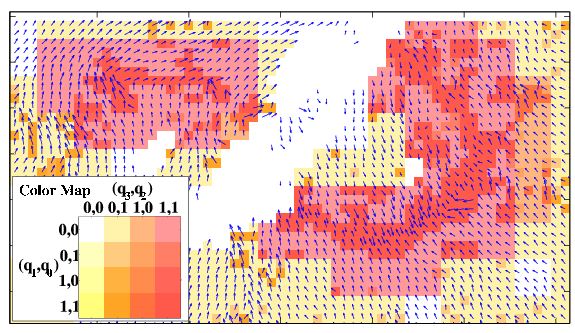
The quality assurance (QA) algorithm infers the quality of scatterometer retrieved winds by evaluating the self-consistency of the selected wind flow. This is done in two ways:
| Each wind vector cell is given a level QA bit flag defined in the adjacent table. Cells flagged with both the region ASE flag and the ASE cell flag have a high likelhood of indicating the position of ambiguity selection errors. The QA flag can be viewed as an integer number between 0 and 15 indicating increasing uncertainty of the selected wind flow. Because the QA algorithm is effective in locating unnatural breaks in the wind flow, areas with realistic fine-scale wind features (such as storms and fronts) may be flagged while ambiguity selection errors resulting in consistant wind flow may not. |
|

[Data]
| [Related Links] | [FAQ
Pages] | [Software]
[Home]
| [Contact
Information] | [Documentation]
Last revised : April 2001